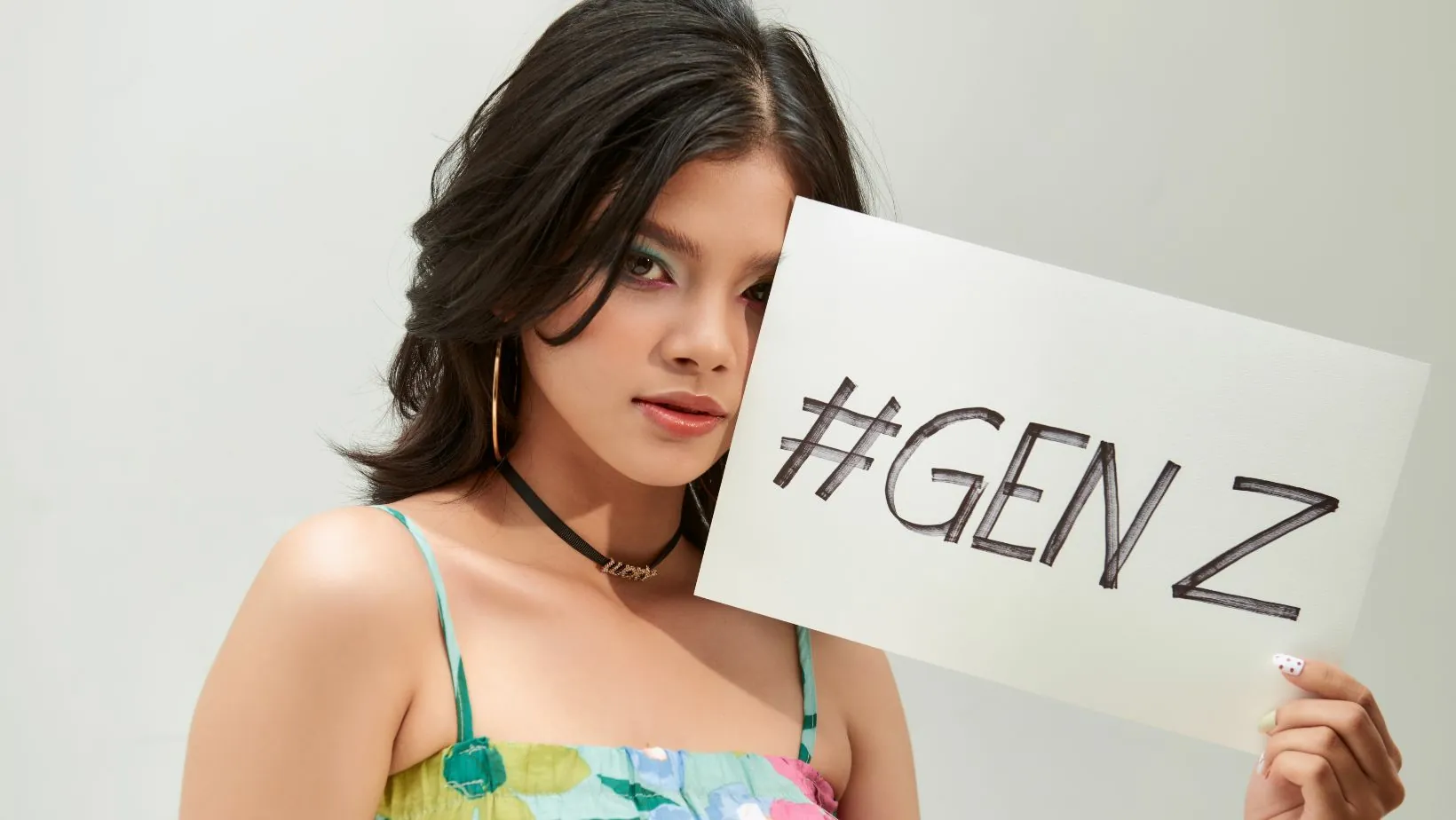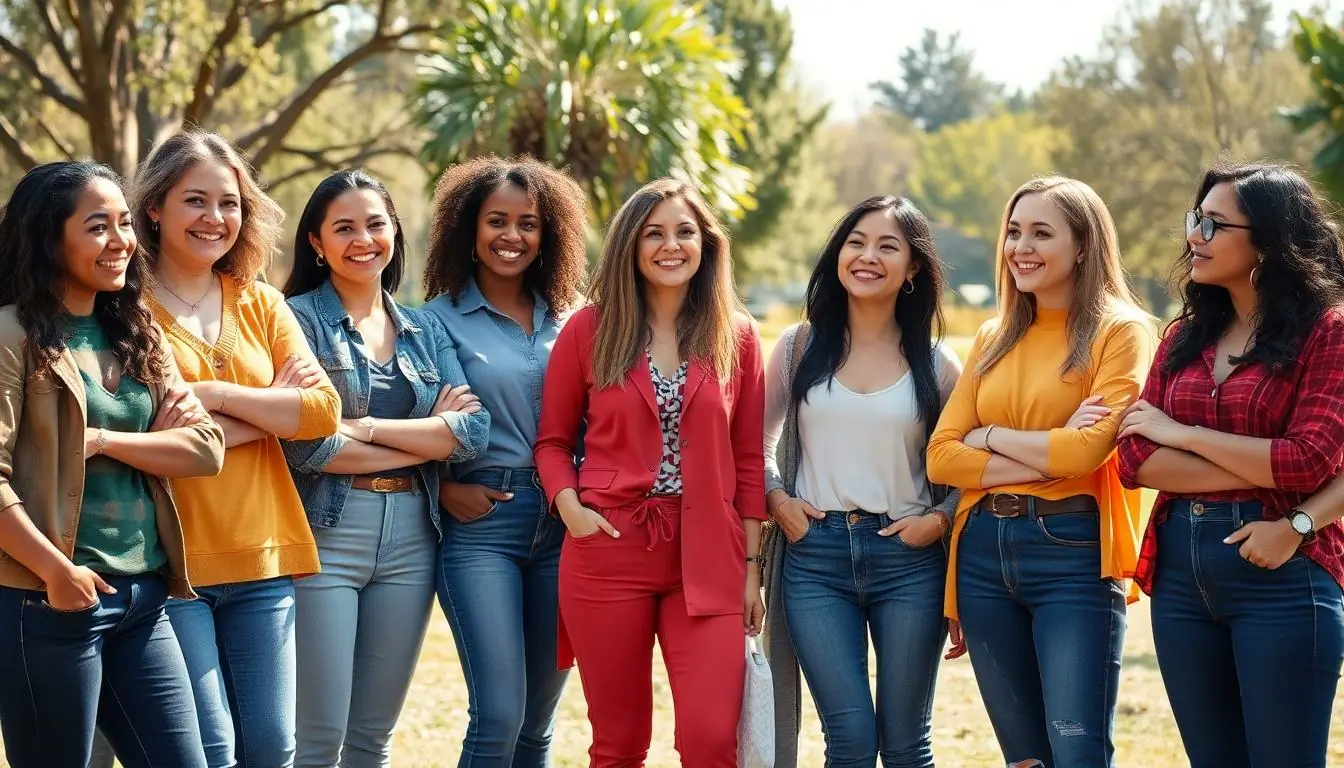Table of Contents
ToggleGen Z is shaking up the pop culture scene like a TikTok dance challenge gone viral. With their unique blend of humor, creativity, and a dash of rebellion, this generation is redefining what it means to be trendy. From meme culture to eco-conscious fashion, they’re not just following trends; they’re setting them, often leaving older generations scratching their heads in confusion.
As they navigate a world dominated by social media, Gen Z’s preferences are shaping everything from music to movies to fashion. It’s a whirlwind of influences that’s both fascinating and, let’s be honest, a little chaotic. Buckle up as we dive into the vibrant and ever-evolving world of Gen Z pop culture trends, where the only constant is change—and maybe a few viral cat videos.
Overview Of Gen Z Pop Culture Trends
Generation Z significantly shapes contemporary pop culture, characterized by their unique humor and creativity. This cohort utilizes social media platforms to disseminate trends quickly, impacting the realms of music, fashion, and entertainment. Social media serves as a canvas for their creativity, often giving rise to viral phenomena that capture widespread attention.
Meme culture exemplifies Gen Z’s humor, bringing relatable and often satirical content to the forefront. This generation engages with memes not just for laughs but as a means of commentary on societal issues. Trends spread rapidly among platforms like TikTok and Instagram, fostering a new wave of creators who challenge traditional entertainment methods.
Fashion among Gen Z reflects diversity and sustainability, showcasing an inclination toward eco-friendly materials and thrifted apparel. Brands that align with their values gain popularity, while those perceived as inauthentic may struggle to connect. Vintage styles see a resurgence as this generation embraces individuality while expressing their identities through clothing.
Music trends also shift under Gen Z’s influence, marked by a blend of genres and the rise of DIY artists. Streaming platforms allow access to diverse sounds, making genre boundaries increasingly fluid. Collaborative projects and TikTok challenges elevate songs to viral status, demonstrating the power of social platforms in music consumption.
Gen Z’s pop culture trends showcase a blend of creativity, humor, and a commitment to social issues. Their engagement with digital platforms fuels ongoing cultural shifts, setting the stage for new expressions of art and identity across multiple domains.
Social Media Influence
Social media significantly impacts how Generation Z shapes pop culture. Through various platforms, they disseminate trends at an unprecedented speed.
Platforms Shaping Trends
TikTok stands out as a primary platform for trend creation. Users share short videos, showcasing dance moves and unique challenges. Instagram also plays a vital role in fashion and lifestyle choices. Influencers on this platform curate content, driving engagement through visually appealing aesthetics. Twitter serves as an important hub for memes and real-time commentary, facilitating rapid cultural conversations. The influence of YouTube cannot be overlooked, as creators post in-depth content ranging from fashion hauls to music reviews, further shaping Gen Z’s preferences. These platforms create interconnected spaces where trends emerge and evolve, influencing various aspects of daily life.
Viral Challenges and Memes
Viral challenges capture the attention of Gen Z, encouraging participation and creativity. Examples include the Renegade dance and the Ice Bucket Challenge, drawing widespread engagement. Memes serve as another essential aspect of their humor, allowing users to express thoughts on societal issues succinctly. Formats like “Distracted Boyfriend” and “Woman Yelling at a Cat” resonate, providing relatable content. Sharing memes fosters connection among peers, further solidifying their collective identity. Viral content often transcends platforms, ensuring that trends reach a broader audience. Memes and challenges reflect the values and norms of the generation, serving as both entertainment and commentary.
Fashion And Style
Generation Z’s fashion choices significantly reflect their values and identity, with a strong emphasis on creativity and individuality.
Thrift Culture
Thrift culture enjoys immense popularity among Gen Z. Embracing second-hand clothing aligns with a desire for unique, stylish pieces that aren’t mainstream. Shopping at thrift stores allows them to express individuality while promoting sustainability. Many opt for vintage brands, creating outfits that showcase personal flair. This trend also fosters a community centered on exchanging ideas about fashion, styling tips, and sustainable choices. Social media platforms, especially TikTok and Instagram, amplify their thrift finds, inspiring countless others to join the movement. The connection between thrift shopping and environmental awareness strengthens as more young people recognize the benefits of reusing clothing.
Sustainable Fashion Choices
Sustainable fashion choices resonate deeply with Generation Z. Prioritizing eco-friendly materials, they often gravitate toward brands that emphasize environmental responsibility. Many opt for clothing made from organic, recycled, and biodegradable fabrics, contributing to a shift in industry standards. Brands like Reformation and Patagonia exemplify this focus on sustainability while offering trendy designs. Advocating for transparency in production processes, Gen Z encourages companies to disclose their supply chains. Additionally, the rise of rental services highlights a growing preference for temporary fashion over ownership. This commitment to sustainability marks a significant departure from previous generations, reflecting a cultural shift toward conscious consumerism.
Music And Entertainment
Generation Z’s influence on music and entertainment reflects their unique tastes and digital-savvy nature. They engage with emerging artists who often defy traditional genres and promote diverse sounds.
Emerging Artists
Emerging artists capture Gen Z’s attention with innovative approaches and authentic storytelling. Indie musicians often find success through platforms like TikTok, where viral challenges propel their songs into popularity. For instance, the rise of artists such as Olivia Rodrigo illustrates how social media can create overnight sensations. These new talents blend genres to resonate with diverse audiences, reflecting a shift in listening habits. Collaborations between established acts and newcomers showcase Gen Z’s demand for fresh artistry and inclusivity. Moreover, music platforms enable artists to maintain direct connections with fans, fostering community and support.
Streaming Services Impact
Streaming services significantly reshape how Gen Z consumes music and entertainment. Platforms like Spotify and Apple Music prioritize personalization, providing tailored playlists that cater to individual listening habits. Artist discovery thrives as algorithms recommend new songs and artists based on previous choices. Moreover, the ease of access promotes binge-watching of shows on platforms like Netflix and Hulu. Short-form content on TikTok drives users to explore music, creating viral moments that can boost an artist’s career. The flexibility of these services influences how artists release music, favoring singles and EPs over traditional albums. Overall, streaming services empower both creators and consumers, emphasizing a dynamic shift in the entertainment landscape.
Language And Communication
Generation Z utilizes unique language patterns that distinguish their communication style. Slang and new dialects emerge as significant aspects of their interactions.
Slang and New Dialects
Terms like “lit” and “bet” reflect Gen Z’s innovative approach to language. A blend of urban vernacular and internet speak shapes these expressions, establishing a dynamic linguistic landscape. They often create new words or repurpose existing ones, promoting self-expression and clarity among peers. This generation favors brevity, utilizing abbreviations like “FOMO” for fear of missing out and “GOAT” for greatest of all time. Slang evolves rapidly, influenced by social media trends and popular culture phenomena. As older generations interpret these terms differently, confusion can arise, further illustrating the generational communication gap.
Digital Communication Styles
Texting and direct messaging dominate Gen Z’s communication methods. They prefer platforms like Snapchat and Instagram for quick, visually-focused exchanges. Emojis, GIFs, and memes serve as vital tools for conveying emotions and humor effectively. Crafting messages that engage friends requires creativity and spontaneity. The incorporation of video content through TikTok or Instagram Reels adds another layer, facilitating storytelling in a compact format. This generation often relies on asynchronous communication, allowing for thoughtful responses over immediate reactions. Results include richer conversations that adapt to individual styles and preferences, enhancing connectivity among peers.
Generation Z’s influence on pop culture is undeniable. Their unique blend of creativity and humor reshapes everything from fashion to music. As they navigate a rapidly changing digital landscape they continue to drive trends that reflect their values and identity.
With a strong focus on sustainability and individuality Gen Z is not just consuming culture but actively creating it. Social media platforms serve as the perfect stage for their expressions allowing them to connect with like-minded peers and amplify their voices.
This generation’s impact will likely resonate for years to come as they redefine what it means to engage with pop culture in a modern world.







